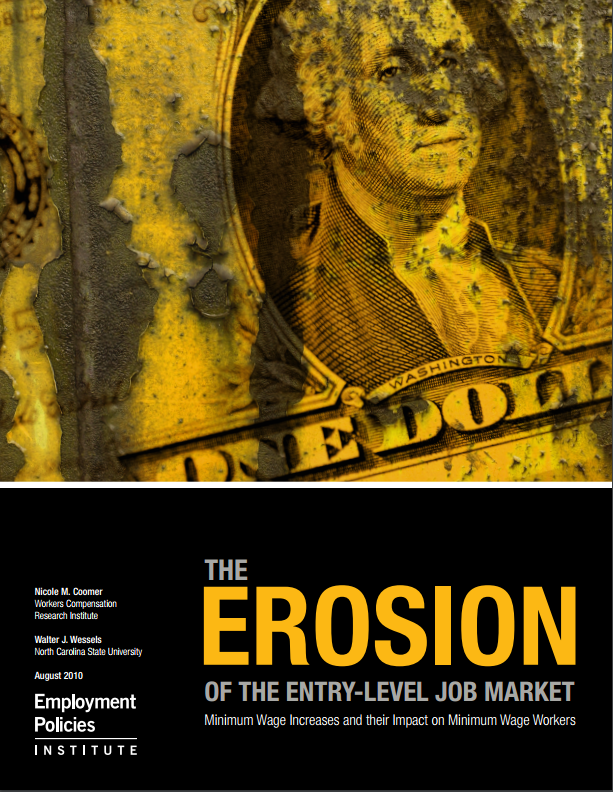Economic research has extensively documented that teen jobs are lost as an unintended consequence of a higher minimum wage. When labor costs increase due to a wage hike, employers who have to pay this new higher wage to train low-skilled, minimum wage workers find a way to do more with less. That might mean reductions in customer service or an increased reliance on automation.
But not all businesses are bound by the minimum wage. For instance, many small and medium–sized businesses are exempt from the federal minimum wage under the Fair Labor Standards Act. These exempt employers serve as an alternate employment option and absorb inexperienced teens that would otherwise find themselves priced out of a job when the binding minimum wage increases.
New research from Drs. Nicole Coomer (Workers Compensation Research Institute) and Walter Wessels (North Carolina State University) demonstrates how minimum wage increases have a disproportionately harmful impact on those working minimum wage jobs, and suggests that states who aggressively expand their own minimum wage may be doing more harm than good.
The authors find that minimum wage workers are often young, inexperienced, and working part-time. They’re often employed in low-margin industries like food preparation and service. An increase in the minimum wage causes a dramatic increase in labor costs that these employers can’t reasonably absorb. Instead it’s offset with reductions that mean fewer jobs for the country’s teens.
The difference between total job loss and minimum wage job loss is dramatic. Coomer and Wessels find that when the minimum wage is increased by 10 percent, employment for 16-to-19-year-olds in minimum wage jobs falls by as much as 11.1 percent. Looking specifically at 16-to-17-year-olds, employment losses rise to 13 percent.
The total job loss is moderated somewhat by the existence of businesses that aren’t covered by the minimum wage. Displaced teens and other minimum wage workers can find jobs with employers who can legally pay them a wage commensurate with their skills. As a result, a 10 percent minimum wage increase results in a total teen employment loss of 2.3 percent.
An important implication is that teen employment losses could be greater in states that choose to expand the coverage of the minimum wage. With no alternative employment options available—very few businesses, large or small, are exempt from a higher state minimum wage—teens who were previously working at minimum wage jobs are confronted with larger employment losses.
Supreme Court Justice Louis Brandeis famously called states the “laboratories of democracy.” But this research suggests that, with state wage mandates, these experiments could have unfortunate unintended consequences.
